Is Your Dog A Lazybones Or A Bark-athloner? The Stats Don’t Lie
When you purchase through links on our site, we may earn a commission. Here’s how it works.
You might think your dog is active—but how do they really stack up? Thanks to wearable tech like FitBark and a growing number of large-scale study reviews, we can now quantify dog movement like never before.
Table of Contents
From the most athletic breeds to global canine activity trends, this deep dive into dog activity statistics might change how you think about your dog’s daily routine.

Why Movement Matters
Exercise does more than burn off your dog’s zoomies—it’s a foundation for a longer, healthier life. Physical activity helps keep joints flexible, weight in check, and energy levels stable.
A landmark 14-year study from the Purina Institute found that dogs maintaining a lean body weight from puppyhood onward live nearly two years longer than their overweight counterparts. While the science of canine longevity continues to evolve, most veterinarians agree that just 30 minutes of daily movement can positively impact your dog’s health.
But it’s not just about adding years to your dog’s life—it’s about improving those years. Active dogs tend to be more engaged, less anxious, and sharper mentally. One study published in Scientific Reports found that consistent activity correlates with stronger working memory and better cognitive performance.
In short? Movement matters. A lot.

About The Data
This article combines stats and insights from various sources, including two of the most standout resources in canine activity:
Real-Time Data Source: FitBark Explore
FitBark Explore is an interactive platform that compiles real-time data from dogs wearing FitBark activity trackers in over 150 countries. It allows pet parents, vets, and researchers to analyze how breed, age, lifestyle, and geography impact canine movement and rest.
Long-Term Insights: The Dog Aging Project
The Dog Aging Project is a long-term research initiative studying how genetics, lifestyle, and environment affect aging in over 30,000 companion dogs across the U.S.
This article references findings from the Dog Aging Project via a research article titled “Age and Physical Activity Levels in Companion Dogs: Results From the Dog Aging Project,” which investigates how various factors influence the physical activity levels of companion dogs.
Is Your Dog Getting Enough Exercise?
Let’s be honest: Most dogs aren’t chasing tennis balls across grassy meadows all day. Between our desk jobs, chaotic schedules, and the gravitational pull of the couch, many dogs simply aren’t moving as much as they need. But how much exercise should they be getting?
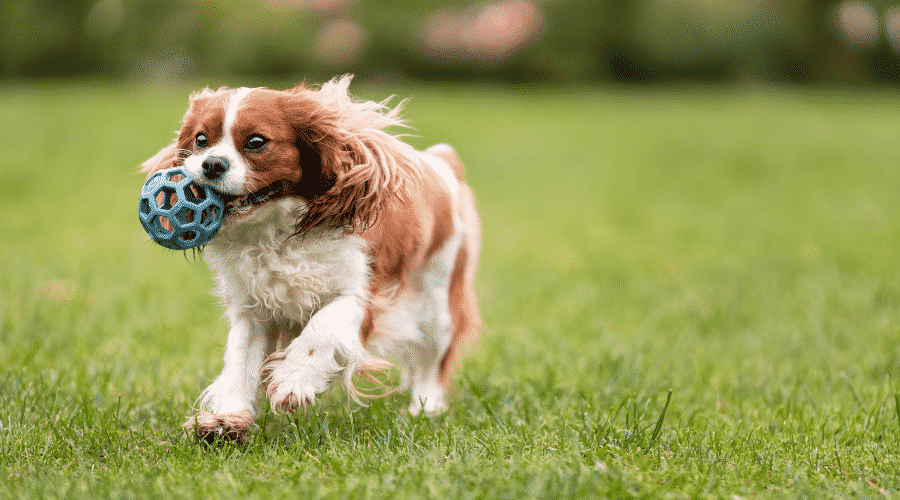
According to a comprehensive study from the Dog Aging Project, activity starts high and steadily drops as dogs age. At 1 year old, dogs averaged 3.5 hours of activity daily. By 17, that number dropped to 2.3 hours.
Age alone accounted for over 14% of the variation in activity intensity, making it the single strongest predictor of how much a dog moves.
Puppies vs Adults
According to FitBark Explore, puppies between 3 and 6 months average 16,221 BarkPoints of daily activity and rest about 11.2 hours daily. In contrast, adult dogs (~3 years old) average just 8,163 BarkPoints and 14.5 hours of rest. That’s nearly a 50% drop in movement as dogs age.

Note: BarkPoints are FitBark’s proprietary metric for quantifying your dog’s physical activity based on movement intensity and duration rather than just counting steps.
Need help figuring out how much movement your pup needs? Check out our guide on how much exercise a puppy needs.
Every dog is different—but breed, age, and even where you live can all affect how much activity your pup gets. Below, we break down the data by group so you can see what’s typical—and what might need a tune-up.
Most Active Dog Breeds
Some dogs are built for action—and it shows in their BarkPoint scores. FitBark’s dog activity statistics show just how big the differences can be based on breed and age.
Overall, Vizslas, Spaniels, and Terriers require much more activity than other breeds.
Top 5 Active Adult Breeds
- Hungarian Vizsla: 11,369 BarkPoints
- German Shorthaired Pointer: 11,276
- Miniature Pinscher: 10,999
- English Cocker Spaniel: 10,552
- English Springer Spaniel: 10,483
These breeds tend to be high-energy companions that thrive with structured exercise, such as long runs, agility training, or daily play sessions.
Top 5 Active Puppy Breeds
- English Cocker Spaniel: 19,998 BarkPoints
- English Springer Spaniel: 19,000
- Cocker Spaniel: 17,692
- Yorkshire Terrier: 17,141
- Shih Tzu: 16,548
It’s not just the usual suspects—plenty of smaller breeds also rank high in puppy activity levels. Notably, puppies of all breeds are significantly more active than adults, often racking up nearly double the movement.
Top 5 Active Senior Breeds
- Vizsla: 9,831
- Jack Russell Terrier: 7,909
- Standard Dachshund: 7,256
- Pomeranian: 6,784
- Yorkshire Terrier: 6,763
These breeds tend to retain their energy well into their senior years, especially when supported by regular movement and low-impact activities.
Want more movement ideas tailored to your dog’s energy level? Here are exercises to do with your dog that don’t require a fenced yard or frisbee mastery. You can also view our lists of most high-energy and low-energy dog breeds.
Size, Health & Gender: Does It Affect Dog Activity?
According to a 2022 survey by the Association for Pet Obesity Prevention, 59% of dogs in the U.S. are overweight or obese. Excess weight can make everyday movement more difficult and uncomfortable for dogs, leading to a cycle of inactivity.
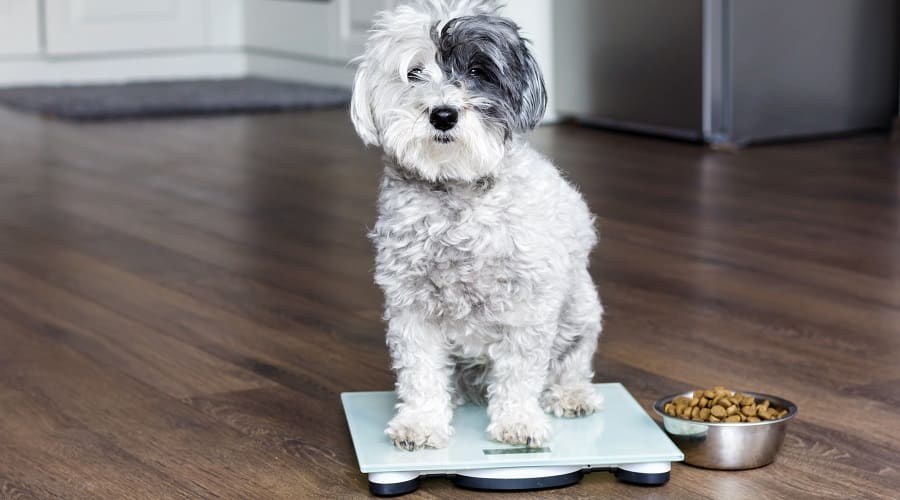
Osteoarthritis is another major factor impacting canine movement. FitBark data shows that osteoarthritis reduces daily activity by more than 33% in adult and senior dogs. This degenerative joint disease is more common in older or overweight pets and can significantly limit their ability to stay active without pain management.
The Dog Aging Project found that body size influences activity—particularly intensity—in early life. Larger dogs tended to be more vigorous in their movements, but they didn’t necessarily spend more time being active than smaller breeds. Interestingly, the duration of activity remained relatively consistent across size categories.
Regarding gender, FitBark data shows that male and female dogs move at nearly identical levels. On average, males logged 7,092 BarkPoints daily, while females were behind at 7,052—a statistically negligible difference.
Sleep Stats: Who’s Snoozing The Most?
Sleep is just as crucial to your dog’s health as activity. While the amount of rest varies by age and breed, most dogs spend more time snoozing than running laps in the backyard.

Average Daily Rest Time by Age:
- Puppies: 11–13 hours
- Adults: 14–15 hours
- Seniors: 15–16 hours
Regardless of age, larger dogs tend to log more rest than smaller breeds.
Sleep quality, or efficiency, can also vary widely by breed. According to FitBark data:
- Golden Retrievers have the highest sleep efficiency at 89.0%
- Yorkshire Terriers score lowest at 82.5%.
Yorkshire Terriers appear to need less sleep than your standard pooch. As puppies, they typically get just 10.8 hours of sleep daily, increasing to 13.7 hours as they age. This means they’re a true Velcro dog breed, spending more time awake, following you from room to room, and joining your daily routines.
If your pup seems to nap all day, they’re probably right on track. But drastic changes in sleep patterns—more or less—can be a sign of stress or underlying health issues.
When Are Dogs Most Active?
Understanding when dogs are naturally inclined to move can help you plan walks, play sessions, and enrichment activities more effectively. Whether you’re trying to burn off excess energy or time your outings with your dog’s peak motivation, timing matters.
According to FitBark’s global activity data:
- Most active hour: 6 p.m.
- Most active days: Saturday, Sunday, then Friday
This makes sense—most people are off work, and dogs benefit from that extra time and attention. Weekends offer more chances for longer walks, hikes, and outdoor play.
But dogs that aren’t restricted by human routines show a different rhythm. Research on free-roaming domestic dogs—including farm dogs in Switzerland and owned street dogs in Guatemala—found a bimodal activity pattern. These dogs peak in activity early in the morning (5–7 a.m.) and again in the late afternoon (4–7 p.m.). This pattern is common among wild canines too.
Interestingly, only about 45% of pet dogs follow this natural two-peak pattern. The rest tend to adapt their routines to match their humans—meaning activity may be concentrated around when we’re home, not necessarily when their instincts kick in.
Where Are The Most Active Dogs?
Your dog’s environment can shape their activity level more than expected. According to the Dog Aging Project, dogs living in rural areas are more active than their suburban or city-dwelling counterparts—especially early in life when curiosity and energy levels are high.
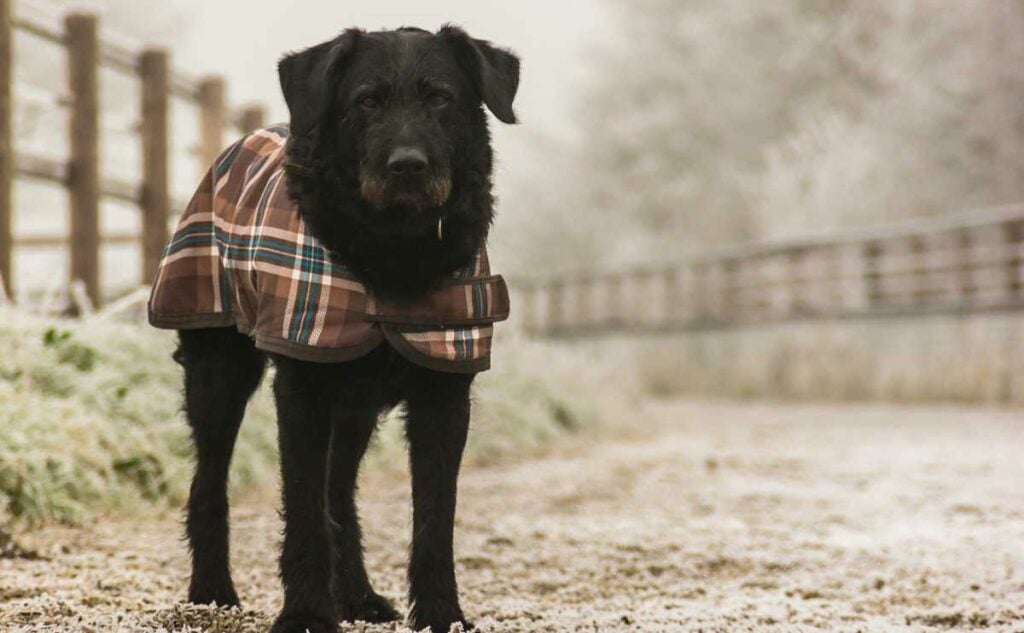
Still, location wasn’t the strongest factor overall. Environmental influences explained just 1–2% of the variation in activity, whereas age had a much greater impact.
That said, local culture and routine still matter. If your dog seems less active than usual, their zip code could be partly to blame. FitBark reports:
- Most active U.S. state: Massachusetts
- Most active country: Switzerland (9,634 BarkPoints daily)
- U.S. national average: 6,479 BarkPoints
What Are Other Dog Owners Doing?
Researchers from the Dog Aging Project noted that owners’ beliefs about their dogs’ exercise needs significantly influenced how much activity their dogs actually got.
Dogs perceived to need more exercise received more frequent walks and enrichment opportunities, while those perceived as lower-energy were walked less—regardless of their actual breed tendencies.
A UK study of over 12,000 pedigree dogs—conducted via an online survey—found:
- English Setter (100%), Irish Setter (100%), Old English Sheepdog (100%), and Hungarian Vizsla (98%) were the most likely breeds to be walked once per day or more.
- In contrast, breeds least likely to receive daily walks included Afghan Hounds (50%), Papillons (58%), Pyrenean Mountain Dogs (60%), and Chihuahuas (62%).
Dogs in the gundog, pastoral, and hound groups were most frequently exercised daily, while toy and terrier groups trailed behind.
Want to compare your habits? Check out our guide on how often to walk your dog.
Dog Ownership = Healthier Humans
The benefits of dog ownership aren’t limited to wagging tails and morning cuddles—they extend to your health, too. Owning a dog can be a powerful motivator to get moving, especially for people who struggle to stick to an exercise routine.
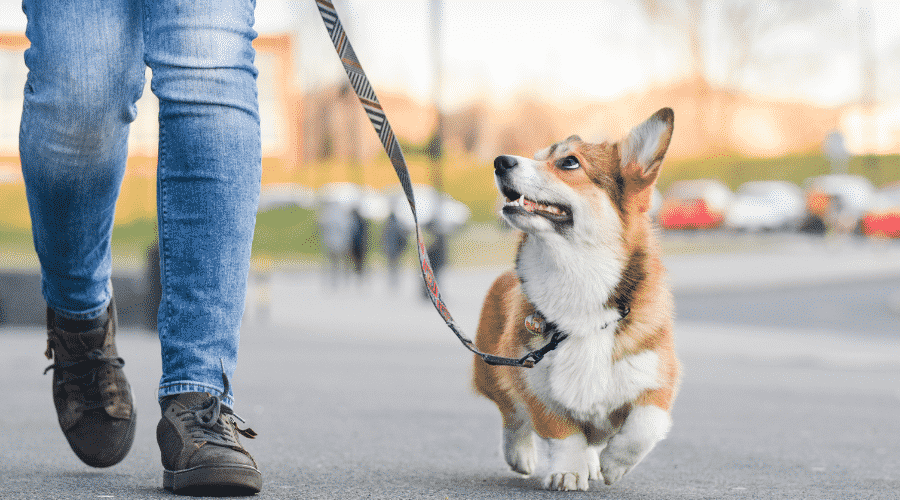
- Dog owners are 4x more likely to meet recommended physical activity guidelines.
- On average, adults who walk their dogs rack up over 160 minutes of activity per week.
- Children with dogs are more likely to reach their 60-minute daily activity targets, which is a huge deal since only one in three children currently meets the Physical Activity Guidelines for Americans.
So, when you leash up for that evening walk, remember you’re doing something great for your dog and yourself.
Activity & Injury: The Risk Of Overdoing It
More movement isn’t always better—especially when dogs jump into high-impact activities without proper conditioning. While regular exercise is essential, overdoing it can lead to avoidable injuries.
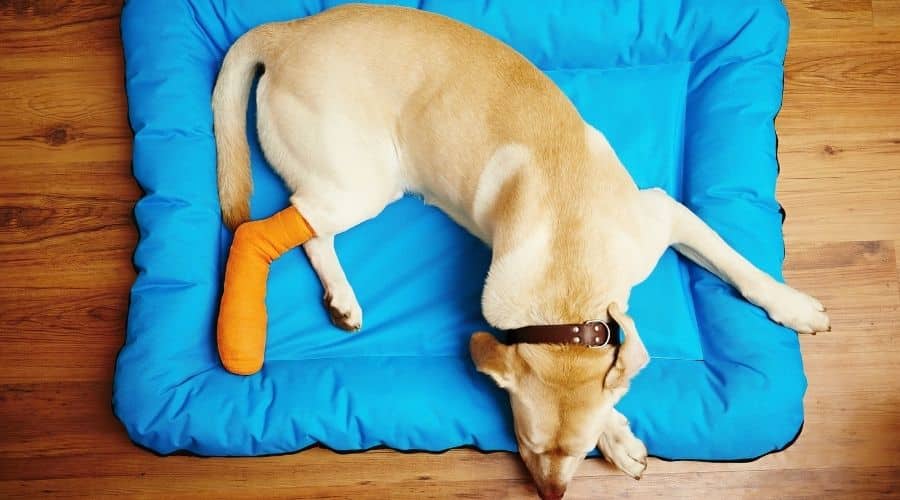
Injury risk is especially notable in highly active dogs, such as agility competitors, working dogs, and canine athletes. According to one study on working dogs, 45.5% experienced at least one injury during their training or career. Many of these injuries were linked to a lack of structured warm-ups, cooldowns, or conditioning routines.
A separate study on agility dogs found that Border Collies had the highest injury rate at 52%, with the shoulders and iliopsoas muscles being the most commonly affected areas.
To help reduce the risk of injury, it’s important to balance activity with rest days and integrate preventative care—like warm-ups, stretching, and post-exercise recovery time—into your dog’s routine. Warm-ups, cooldowns, and structured routines can help mitigate risk.
Is Your Dog More Active Than Average?
Whether you’re raising a couch potato or a canine marathoner, tracking your dog’s activity helps you spot changes early, meet their needs, and improve your health in the process.
With tools like FitBark Explore and other pet activity monitors, it’s easier than ever to understand how your dog stacks up—and what they need to thrive.
If you’re curious about data-driven ways to stay on track, here are the best dog activity monitors to help your pup stay fit and fabulous.
So, is your dog ahead of the pack? Or is it time for an extra lap around the block? Let us know in the comments!



